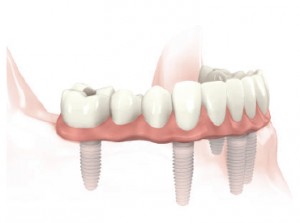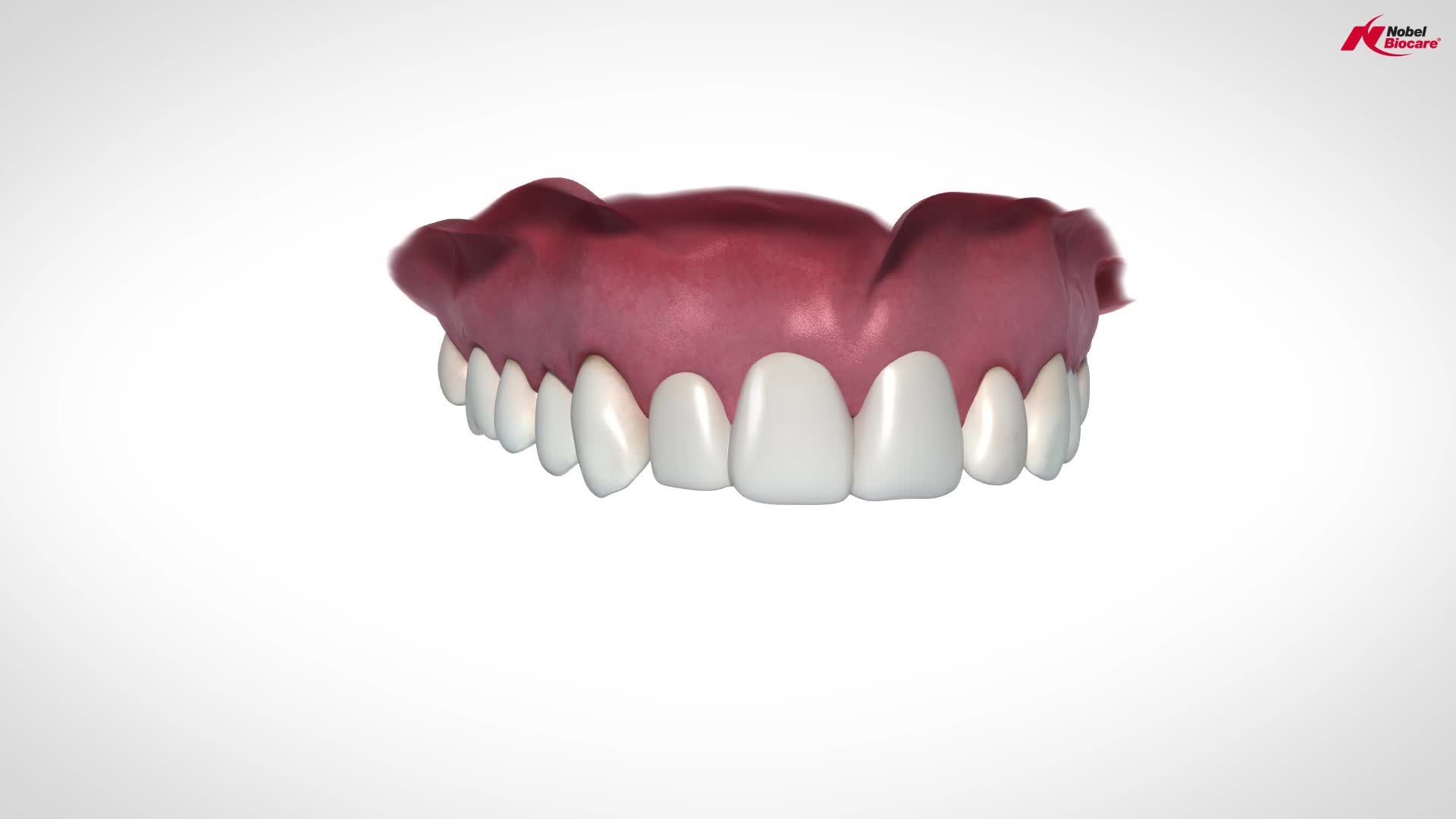About dental implants
 Implantology is a method to replace teeth, in which your dentist places an implant into your jaw bone. After the healing process and the fabrication of the restoration, the implant can take the role of your missing tooth. Implant based restorations resemble natural teeth and they can be loaded similarly.
Implantology is a method to replace teeth, in which your dentist places an implant into your jaw bone. After the healing process and the fabrication of the restoration, the implant can take the role of your missing tooth. Implant based restorations resemble natural teeth and they can be loaded similarly.
Based on forty years’ experience, Branemark implant systems have proved to be the most successful systems. The success rate of implants after at least five years in place is 95%. The first patients have had their implants for more than forty years.
We use highly reputed Branemark® and Nobel® Replace implant systems, as well as Logintech®, Camlog® and AlphaBio® screws.
What are the advantages of having implants?
If you have one or two missing teeth and you chose to replace it with an implant, there is no need to grind the neighbouring teeth and make a bridge.

If you have missing molars, you can have a fixed restoration instead of a partial removable denture. Fixed restorations feel more like your natural teeth, you can get used to them more quickly, and they are more aesthetic and more hygienic.

If you have a large number or missing teeth or all of your teeth are missing, implants can support a fixed bridge or a full denture. We can prepare an implant based anchor that will support the denture firmly, so that it does not slip when you chew or speak. Depending on the condition of your jaw bone we can place several implants into the bone and replace the missing teeth with bridges.
We always offer you several treatment options, but for the problems mentioned above implants are the best solutions.
Steps of implant placement
Phase 1 | Treatment planning and preparation
Before we can place the implant we take your medical history and complete your medical records, refer you for a lab test, including a full blood count, for X-rays and for further examinations if it is necessary. Then we make a detailed treatment plant. It is important to inform your dentist about any chronic diseases and regular medications, so that he can learn more about your general health condition.
Dental preparation involves X-rays and a Cone Beam CT scan, followed by taking an impression, screening for oral diseases and scaling. Using the impression and the CT scan we prepare a surgical drilling model.
Phase 2 | Placing the screw into the jaw bone
We perform a surgical intervention to place the implant into the jaw bone. The intervention is performed under local anaesthesia and it is pain-free. We use the surgical drilling model to drill into your bone and insert the implant. Depending on the type of surgery and the quality of your bone, healing time is approximately 3 months.
Phase 3 | Opening the gum above the implant
This phase is only required if we follow a two-stage implant protocol (i.e. implant together with bone augmentation requiring closed healing). We open the gum above the integrated implant and start aesthetic shaping of your gum with a special gingival screw. Healing time is approximately 1-2 weeks.
Phase 4 | Shaping the gum and taking impressions
We start fabricating the restoration. We take an impression and then the dental technician fabricates the connective devices and the restoration. If requested, we can place a temporary restoration on the implant.
Phase 5 | Trying the restoration, correction, final adjustment and placement
Phase 6 | Check-up and oral hygiene education
After implant placement you receive a certificate which contains the date of the intervention and a list of all implants and attachments together with their product codes. We only provide guarantee for procedures started and completed at our clinic and of which we have issued a certificate.









